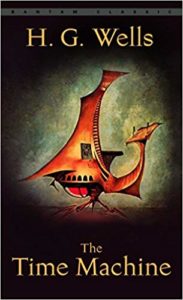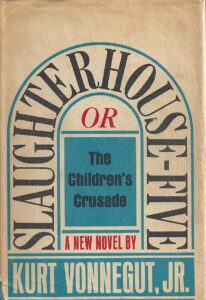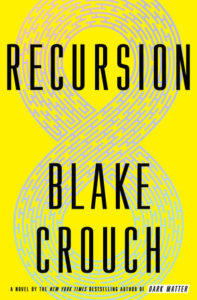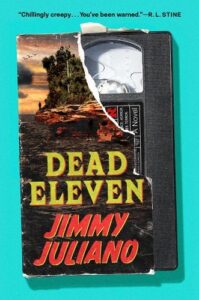While writing my debut novel Dead Eleven, I found myself dwelling on the concept of time. In the novel, an island off the coast of Wisconsin is seemingly stuck in a time loop on a particular day in 1994–a newcomer arrives, and things get pretty sinister from there. The book is mystery and horror, and hopefully readers feel compelled to solve the puzzle. Why do these islanders behave the way they do? Is there something cosmic going on, or are these people making a choice? You’ll have to read to find out.
I’ve always enjoyed novels and films that “mess with time”, and writing Dead Eleven was an absolute blast. Time is such a fun concept to play with, and many authors have crafted wonderfully imaginative stories in that sandbox throughout the centuries. Check out my list below of 5 books that mess with time–and if you’re experiencing déjà vu right now, maybe in another timeline you’ve already read my list (sorry, I had to).

A Christmas Carol, Charles Dickens (1843)
It’s easy to think of Dickens’s 1843 classic as a feel-good Christmas story. And it certainly is that, but when you strip away those holiday vibes, A Christmas Carol is a pretty dark tale (there are ghosts!) with an innovative use of time travel at its core. Visiting his own past is one thing, but the real boundary-pushing aspect of the novella is Ebenezer Scrooge seeing his potential future—with the old miser deducing that the things he witnesses don’t have to happen (“…the shadows of the things that would have been, may be dispelled. They will be. I know they will!” he triumphantly cries near the end of the book).
Still, you can’t deny the Christmas-ness of it all. Is there a better time of year to renounce greed and embrace kindness and love? My friend Joe puts it perfectly when he says, “A Christmas Carol is a small, perfect book, not a word out of place, filled with goodness, good cheer, and humanity, ready every December to remind us what matters and how we can best use the time we’re given.” It’s Joe’s favorite book of all-time, and he’s landed on a good one.

The Time Machine, H.G. Wells (1893)
Fifty years after Ebenezer Scrooge visits his own future, a man known only as “The Time Traveller” jumps ahead nearly one-million years into humanity’s future in The Time Machine. Published in 1893, the H.G. Wells classic tells the story of a man who invents a time machine and visits the year 802,701, where he discovers that humanity has fractured between aboveground and underground species. The novella is largely a commentary on social classes and a potential future for the human race—although, unlike A Christmas Carol, we don’t know if this future can be changed.
It’s a quick read—I knocked it out in a few hours—and much of the novella is pretty bleak. Yet, the wraparound story device is fun, and Wells is often credited with coining the phrase “Time Machine”, so it’s worth checking out to learn more about the ancestor of Doc Brown’s DeLorean (if you’re gonna build a time machine into a car, why not do it with some style?).

Slaughterhouse-Five, Kurt Vonnegut (1969)
Can we all agree that Slaughterhouse-Five is a stone-cold classic? We can? Good. I first read Kurt Vonnegut’s novel in high school, and it was one of those books that made me want to become a writer. I hadn’t read anything like it—how could a book with time travel, an unreliable narrator, aliens, and World War II just work so darn cohesively? It absolutely does.
The book tracks the life of Billy Pilgrim—from his time as a student, to his experiences as a POW and surviving the bombing of Dresden, to his life after the war. That’s about as specific as I can be, because it’s exceptionally difficult to pin down any form of a summary or teaser for the plot of this book. Best take it from Vonnegut himself, when he writes, “Listen: Billy Pilgrim has come unstuck in time.” That’s right–Billy Pilgrim has the ability to time travel, allowing him to jump between moments in his life non-sequentially (including the future). It’s pretty wild stuff. If you haven’t yet read this novel to experience Slaughterhouse-Five’s interpretation of time, I implore you to bump it to the top of your TBR immediately.

House of Leaves, Mark Z. Danielewski (2000)
House of Leaves is certainly a novel, but it’s also much, much more than that. Just pick it up and flip through it. You’ll find font and color changes, footnotes, varying page layouts, appendices, and exhibits—and at a beefy 709 pages, there’s certainly lots to explore. Depending on what route you follow (Will you dive into the footnotes? Head to the index? Check the sources? Just ignore all of that stuff and stick to the meat of the story?) the experience can be as disorienting as you’d like it to be.
Danielewski tells the story of a mysterious house that defies the laws of reality and physics (the house is bigger on the inside than it is on the outside, amongst other perplexing things). Readers engage with the mystery through the academic work of a deceased, blind man regarding a purported documentary of the house called “The Navidson Record”. A tattoo artist named Johnny Truant discovers the manuscript and dives into the madness, and well…you just need to read this book. It’s part horror, part satire, part love story, and a total time-bending reading experience (you’re signing up for a story within a story within a story—so, prepare to have your head messed with). And once you actually descend into the bowels of the house, get ready for a ride.

Recursion, Blake Crouch (2019)
Recursion was on many Best of 2019 lists (Time, NPR, BookRiot) and its accolades are well-deserved. Blake Crouch’s twisty thriller sucks you in from the opening pages, as one of the book’s two protagonists—NYPD detective Barry Sutton—tries to talk a suicidal woman out of jumping from the forty-first floor of a building. He fails. The woman claimed to be suffering from something called “False Memory Syndrome”, and the story is off to the races.
Time manipulation is at the core of the novel and, let me tell you, it’s a total trip. The plot is a mashup of many of my favorite things–the science of Jurassic Park, the timeline screwery of Back to the Future, with a little bit of Terminator 2 sprinkled on top. It’s propulsive, it’s unpredictable, and it’s hard to put down. Totally recommend.
***


















